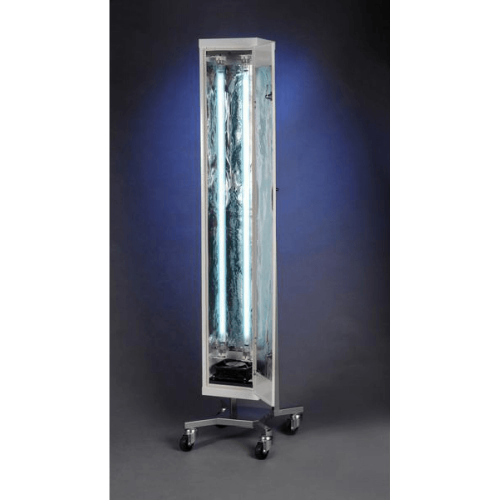Description
Wall-mounted germicidal irradiator with two 30 W UV germicidal lamps, one of which is shielded. It is used to disinfect indoor air and surfaces, as well as equipment, products and packaging. Output at 99% (99.9%) efficiency: 150 (100) m³/h
Number of lamps: 2x30W
Technical characteristics of the bactericidal irradiator “Sibest OBS-2×30-150”
- Irradiator performance at bactericidal efficiency 99.0 (99.9)% 150 (100) m³/h
- Quantity and power of germicidal lamps 2х30 W
- Power consumption 185 VA
- Overall dimensions 955*123*118 mm
- Weight 5.5 kg
PURPOSE
The irradiator is intended for air disinfection in health care institutions, sports, children’s, educational, industrial (food industry workshops, vegetable stores, etc.), residential and other premises in the absence of people. It is completed with two ultra-violet bactericidal lamps on 30 W.
UNIQUENESS
In addition to an open lamp that performs rapid air disinfection and is intended only for irradiating a room free from people, there is a shielded lamp that irradiates the upper layers of air in the room in the presence of people (trained personnel), while the lower layers, when the shielded lamp is operating, are disinfected due to air convection.
PECULIARITIES
- The metal case has a polymer coating that is resistant to UV radiation and any disinfectants.
- The ozone level does not exceed the MPC of atmospheric air
- For the OBS-2×30-150 irradiator, a screen made of polished aluminum is installed separately for each lamp
- Bactericidal lamps are connected to the power supply network by one switch located outside the room (switch for one or two keys);
- All irradiators have passed technical, bacteriological and clinical tests and are approved by the Ministry of Health of the Russian Federation
- Recommended for use:
- for inactivation of the H5 virus serogroup;
- for disinfection of premises from the bird flu virus H5N1;
- for air disinfection from microbacteria – causative agents of tuberculosis (Conclusion of the State Institution “NNII Tuberculosis”).





